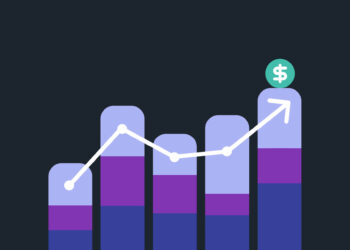Investing your money is one of the strongest ways to grow your wealth over time, but with so many options available, figuring out where to start can feel overwhelming. For everyday Americans and lifelong learners dipping their toes into the stock market, two popular paths often emerge: Exchange-Traded Funds (ETFs) and individual stocks.
Both investment choices offer unique advantages and challenges, and knowing which is right for you can be the key to unlocking your financial goals. This article will walk you through the differences between ETFs and individual stocks, their pros and cons, and how to decide which option might be the best fit for your portfolio.
If you’re ready to demystify the investing landscape, read on!
Understanding the Basics of ETFs and Individual Stocks
ETFs (Exchange-Traded Funds) are investment funds that hold multiple assets, offering diversification at a lower cost. Individual stocks represent ownership in a single company, providing potential for higher returns but with greater risk. Both options suit different investment strategies.
What is an ETF?
An Exchange-Traded Fund (ETF) is a bundle of investments, such as stocks, bonds, or other assets, that are grouped together and traded as a single entity on the stock market. Think of an ETF as a pre-packed gift basket of investments.
For example, an S&P 500 ETF holds shares from the 500 largest U.S. companies. By investing in this ETF, you automatically gain exposure to all those companies without needing to buy each stock individually.
What is an Individual Stock?
On the other hand, individual stocks represent ownership in a single company. When you buy stock in a company like Apple or Tesla, you’re purchasing a piece of the business and sharing in its profits (or losses) depending on its performance.
Unlike ETFs, investing in individual stocks means your success is tied directly to that company’s successes and challenges in the market.
Key Difference Between ETFs and Individual Stocks
The primary distinction is diversification. ETFs automatically provide exposure to multiple assets, whereas individual stocks leave you reliant on a single company’s performance.
The Pros and Cons of ETFs
Advantages of ETFs
- Diversification
ETFs spread your investment across a range of assets or companies, reducing risk. For example, if one company in an ETF underperforms, others in the portfolio might balance out the loss. - Ease of Access
ETFs are easy to buy and sell through brokers, just like individual stocks. Most ETFs also tend to have lower minimum purchase requirements than mutual funds. - Cost Efficiency
Due to their passive nature (most ETFs simply track indexes like the S&P 500), ETFs usually come with lower expense ratios and fees compared to actively managed funds. - Steady Growth
Since many ETFs track the market as a whole rather than betting on individual companies, they often deliver stable, long-term returns.
Drawbacks of ETFs
- Limited Upside Potential
The gains of ETFs are often slower and steadier, which can be less thrilling for aggressive investors looking to cash in on explosive opportunities. - Tracking Errors
Some ETFs might not entirely match the performance of the index they track due to slight inaccuracies in management or fees. - Lack of Personalization
When you invest in an ETF, you get every stock included—whether good or bad. You don’t have control over excluding underperforming or controversial companies.
The Pros and Cons of Investing in Individual Stocks
Advantages of Individual Stocks
- Targeted Control
Own exactly what you believe in. Whether it’s a company you personally admire or an industry you know is set to grow, you have complete decision-making. - Higher Potential for Gains
Strike it rich with the right individual stock. If a company you’ve invested in skyrockets, your portfolio sees significant, immediate returns. - Dividend Payments
Some companies distribute a portion of their profits directly to shareholders as dividends, providing a reliable stream of extra income.
Drawbacks of Individual Stocks
- High-Risk, High-Reward
By relying on a single company, you expose yourself to bigger potential losses. If that company underperforms or collapses, you could lose your investment entirely. - Research Intensive
Investing in individual stocks requires significant time to research and stay up-to-date with your chosen companies and industry trends. - Volatility
Individual stocks often experience more price fluctuations than diversified portfolios like ETFs, making the ride bumpier for risk-averse investors.
When Should You Choose ETFs or Individual Stocks?
Choose ETFs If:
- You value simplicity and diversification
ETFs are a great choice if you’re looking for passive, long-term investments that spread risk across multiple companies or industries. - You’re new to investing
ETFs require less research and offer consistent exposure to the broader market, ideal for beginners. - Your focus is on steady growth
If you prefer solid, predictable returns over time, ETFs are a safer option.
Choose Individual Stocks If:
- You enjoy researching and analyzing markets
Owning individual stocks requires ongoing dedication to understanding specific companies and industries. - You’re prepared for the potential ups and downs
High-risk tolerance is key when investing in individual stocks, as you’ll experience more dramatic movements in their value. - You want to build a personalized portfolio
If you want complete control and the opportunity to chase high gains, individual stocks allow for a more customized investing strategy.
How to Build a Balanced Investment Strategy
Here’s the thing—choosing ETFs and individual stocks doesn’t have to be an either/or decision. Many successful investors use a combination of the two to build a portfolio that matches their risk tolerance and financial goals.
Start with ETFs for stability, then add individual stocks for potential high-return opportunities. For instance, you can allocate the majority of your funds to a reliable ETF like an S&P 500 index fund while using smaller amounts to invest in companies you’re passionate about.
The key is diversification—not just within ETFs but across your entire investment portfolio. Think of it as “not putting all your eggs in one basket.”
Final Thoughts: Find What Works For You
Navigating the investing landscape doesn’t have to be intimidating. By understanding the basics of ETFs and individual stocks, assessing their pros and cons, and aligning your choices with your goals, you can craft a strategy that works for you—whether you’re growing your wealth for retirement or chasing your first 10-bagger stock.
No matter which route you take, the most important investment is in your financial education. Take the time to research, strategize, and consult with financial professionals if needed.
Ultimately, the best path is one that aligns with your financial situation, goals, and risk tolerance. Start small, learn along the way, and enjoy the process!

















